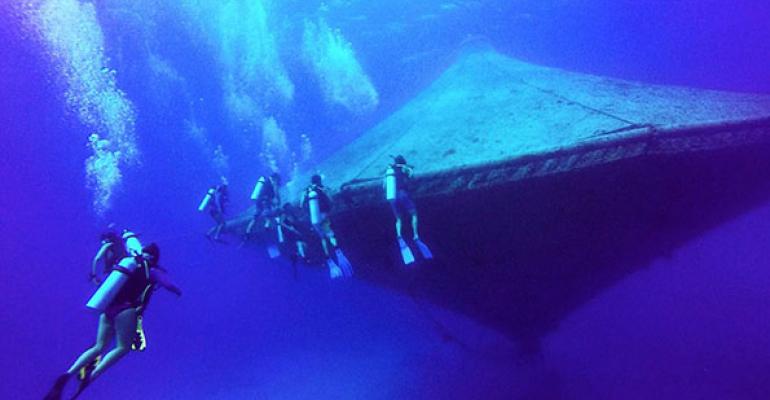With consumers’ growing interest in eating well and the myriad health benefits of seafood, it’s not surprising that consumption of seafood is on the rise. Still, misperceptions about seafood persist, perhaps chief among them that all wild-caught seafood is “good” and all farmed seafood is “bad” in terms of health and sustainability.
“It continues to befuddle us a bit,” said Michael Rubino, director of aquaculture for NOAA Fisheries. “All kinds of seafood is good for you, whether it’s farmed or wild or something in between.”
Sheila Bowman, manager of culinary and strategic initiatives for the Monterey Bay Aquarium Seafood Watch program, says today’s confusion about aquaculture is rooted in the past.
“Ten, 15, 20 years ago the story was more black and white, and most farmed products weren’t great,” from a sustainability perspective, Bowman said.
Despite consumer perceptions, more than 50 percent of all seafood produced globally for human consumption is farmed, according to NOAA. The U.S. imports more than 90 percent of its seafood, roughly half of which is farmed. Of the seafood from U.S. waters, aquaculture makes up for about 20 percent of the value of that annual catch. The percentage of aquaculture is expected to rise as experts indicate that traditional fisheries are already producing at capacity.
Nutritional studies have shown that eating seafood is good for health, as a wide variety of species are rich in the omega-3 fatty acids that have been linked to benefits such as brain development in children and prevention of heart disease in adults. Such research has prompted leading health organizations, including the American Heart Association, the American Diabetes Association and the Arthritis Foundation, to advise eating two meals of ocean fish per week. The U.S. Food and Drug Administration’s 2015 Dietary Guidelines are expected to advise that Americans double their intake of fish to two servings per week when the official recommendations are released later this year.
Things are a little less unanimous in terms of the sustainability of farmed versus wild seafood.
“There is a very wide range of seafood sustainability practices,” said Barton Seaver, chef, author of For Cod & Country, and an advocate of sustainable seafood. “It’s been made so difficult because aquaculture and wild have been made different. But it’s all seafood. When it comes to making purchasing decisions, it’s all proteins.”
Seaver advocates looking at seafood as a single category and trusting in our national fisheries and the system that governs them.
“All fish that are caught aren’t sustainable, but the system is sustainable,” Seaver said. “If we believe that the system is good, should we then not support the product created by that system?”
The U.S. system of managing stocks of fish, wild and farmed, is considered among the most stringent in the world, Rubino said. For example, when a wild species, such as the Atlantic Northern Shrimp, is in danger of being depleted, NOAA prohibits commercial fishing of that species until stocks return to approved levels. And NOAA is the agency that issues permits for aquaculture activities in state and federal waters, ensuring that fisheries follow strict guidelines for safety and sustainability which have been evolving since the organization’s predecessor, the Bureau of Commercial Fisheries, first began experimenting with farming oysters five decades ago.
“We haven’t grown up with fish farms, so it’s new,” Rubino said. “[But] in terms of responsible production, whether it’s wild or farmed, the U.S. has kind of written the book.”
Guides to sustainable seafood
NOAA Fisheries also produces fishwatch.gov, a searchable online guide that provides seafood profiles, including information on source, habitat, taste and health benefits, for consumers and purchasers of seafood.
Similarly, Monterey Bay Aquarium’s sustainable seafood guides help consumers decipher which seafood choices, whether wild or farmed, domestic or imported, are “Best Choices,” “Good Alternatives” or items to “Avoid.” Given the high environmental standards and fisheries management practices in the U.S., Bowman advises that if available, seafood caught or grown in the U.S. is going to be a best choice in terms of sustainability. However, she says there are lots of sustainable imports, too.

“While it seems overwhelming, I think there are good choices,” said Bowman. “People have figured out their tomato, pork, beef, even their beer, strategy. They just need to figure it out for seafood.”
A number of chefs have for some time now been trying to help diners figure it out by telling the story of the seafood on their menus. Among them is Michael Leviton, chef/owner of Lumière restaurant in Newton, Mass., and former board chair for Chef’s Collaborative, the network of professional chefs committed to sustainable sourcing and cooking.
“Sustainability is variable. There is so much grey instead of black and white,” Leviton said. “On the menu we try to say where [our seafood] is from, how it’s caught. If I can name the boat, I will. If the customer is interested it will prompt a question. The learning comes from a dialogue.”
Both Seaver and Rubino agree that storytelling is important.
“I suggest that chefs begin to really tell the story of seafood producers — wild and farmed — with the same respect and romance we apply to local agriculture,” Seaver said. “Seafood producers have been seen as other. It’s worth the effort on our menus to tell that story.”





